The Plextor M8V SATA SSD Review: Toshiba 3D TLC In a Mainstream Drive
by Billy Tallis on March 20, 2018 8:00 AM ESTAnandTech Storage Bench - The Destroyer
The Destroyer is an extremely long test replicating the access patterns of very IO-intensive desktop usage. A detailed breakdown can be found in this article. Like real-world usage, the drives do get the occasional break that allows for some background garbage collection and flushing caches, but those idle times are limited to 25ms so that it doesn't take all week to run the test. These AnandTech Storage Bench (ATSB) tests do not involve running the actual applications that generated the workloads, so the scores are relatively insensitive to changes in CPU performance and RAM from our new testbed, but the jump to a newer version of Windows and the newer storage drivers can have an impact.
We quantify performance on this test by reporting the drive's average data throughput, the average latency of the I/O operations, and the total energy used by the drive over the course of the test.
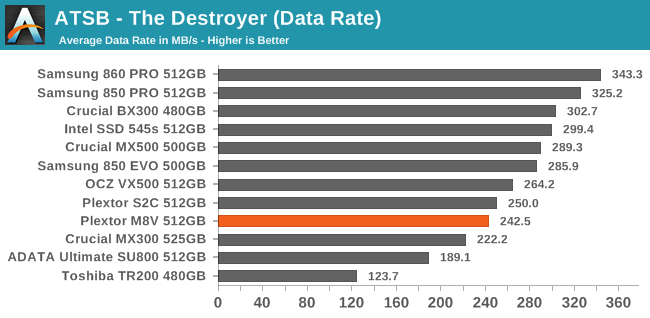
The Plextor M8V has a slower average data rate on The Destroyer than most current drives, but it is clearly faster than the models using Micron's older 32L 3D TLC. The DRAMless Toshiba TR200 is by far the slowest current-generation SSD.
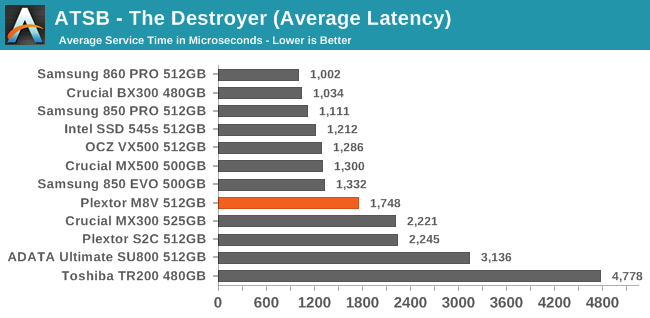
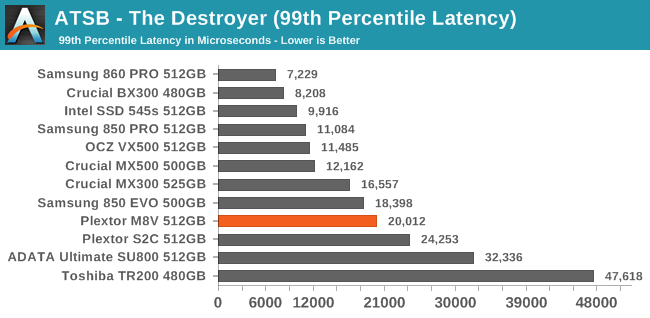
Average and 99th percentile latencies from the M8V are a bit on the slow side. The average latency bridges the gap between the top tier of drives and the handful that have significant trouble with this test.
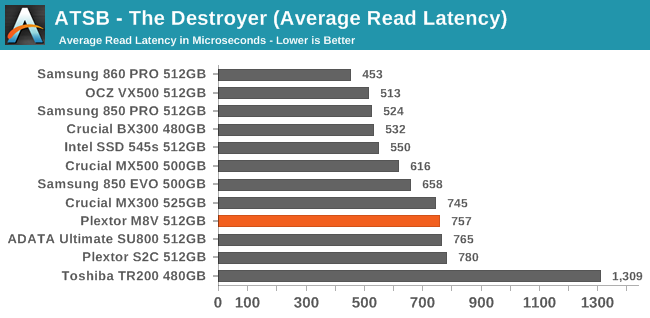
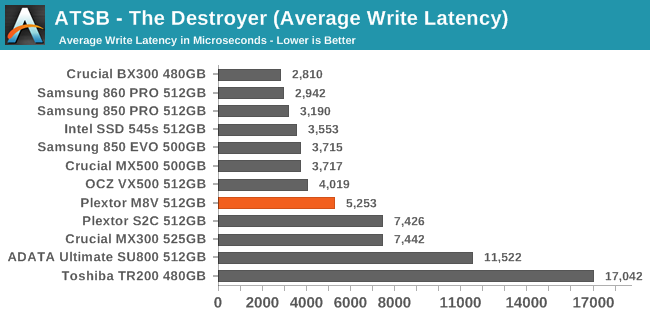
The average read latency from the M8V is on the high side of normal for mainstream SATA drives, and the average write latency is a bit worse than the normal range for current-generation SATA drives.
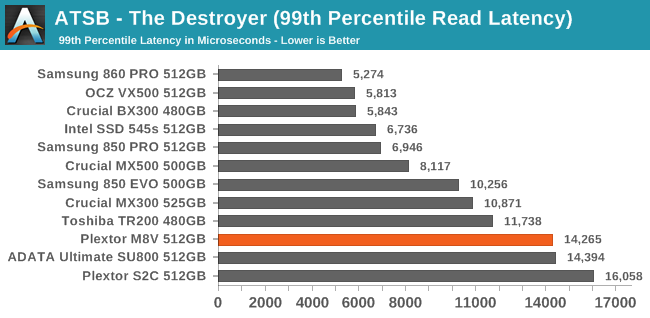

The 99th percentile read latency from the M8V is among the worst in this class of drives. The 99th percentile write latency is also high, but is still small compared to the DRAMless Toshiba TR200.
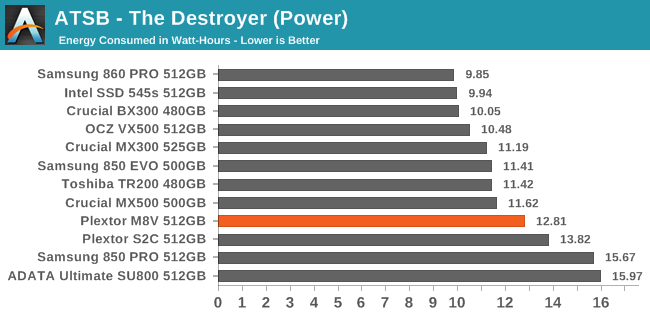
The energy used by the Plextor M8V over the course of The Destroyer is a bit more than normal for this class of drives, as expected given the slower performance than most other 64L 3D TLC drives.










8 Comments
View All Comments
edgineer - Tuesday, March 20, 2018 - link
What's the actual capacity of this drive, 476 GiB? I hate having to use a calculator/guessing.Billy Tallis - Tuesday, March 20, 2018 - link
As with any other 512GB drive, the usable capacity (before partitioning) is 512,110,190,592 bytes.Dragonstongue - Tuesday, March 20, 2018 - link
Crucial MX200 500GB ends up as 465gb usable Win 7 64 build after formatted for useCrucial MX100 256 ends up with 238GB usable
frenchy_2001 - Tuesday, March 20, 2018 - link
That would be because Windows displays GiB (2^30 bytes) and not GB (10^9 Bytes).https://en.wikipedia.org/wiki/Gibibyte
bug77 - Thursday, March 22, 2018 - link
During formatting, some space is reserved for the file system. That is not a limitation of the drive, nor does it make the drive have a smaller capacity.You don't like file system's overhead? Use a different file system. Oh wait, you can't do that on Windows :D
Holliday75 - Wednesday, March 21, 2018 - link
These new bots are everywhere. Been seeing them all over Facebook posting on a few of my favorite professional sports teams pages.FunBunny2 - Thursday, March 22, 2018 - link
but, but, but... Mark just promised that they've been driving the culture at Facebook for years, years I say, to improve user experience. don't you believe him?????leexgx - Sunday, March 25, 2018 - link
can you please fix on mobile view in "Print this article" the "Thanks to" box overrides page width limits so when scrolling up and down it sometimes go left and right